Even if you don’t have room in your yard for a swale, a rain garden or other infiltration areas, you can still practice sustainable stormwater management. Stormwater planters manage runoff directly from your rooftop and function like a rain garden inside a container. Stormwater planters are useful for small spaces, because they can be built close to buildings in any configuration and don’t take up very much space. Additionally, stormwater planters are helpful if you have a significant amount of stormwater traveling from your rooftop directly into the city storm drain or contributing to flooding on your property.
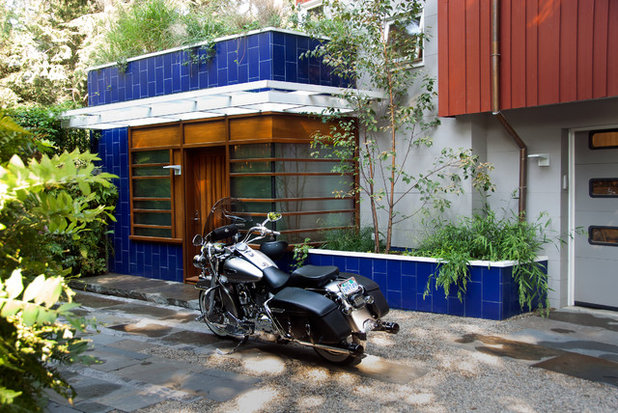
Julie Moir Messervy Design Studio (JMMDS)
How stormwater planters work. Stormwater planters use plants’ and soil’s ability to slow, filter and intercept stormwater, called biorentention, to manage runoff sustainably. They function similarly to rain gardens but are smaller, use layers of soil and stone, and have constructed walls. They can be flush with the ground or built up like a raised bed, depending on the design of your space.
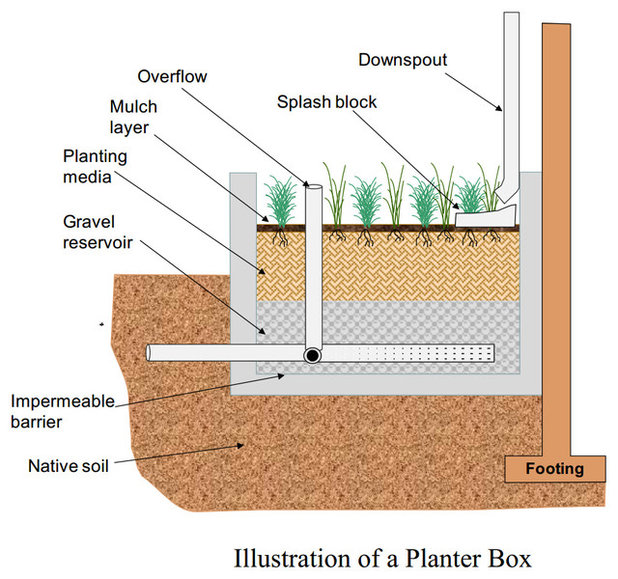 How stormwater planters are constructed.
How stormwater planters are constructed. Stormwater planters have constructed sides — most often made of reinforced concrete. They contain the same plant types used in rain gardens, soil to at least 18 inches deep, a filter fabric and a drainage layer of about 10 inches of rock at the bottom. The planter can act either as an infiltration mechanism, by letting water seep into the ground below, or as a water cleansing mechanism by filtering water through the its layers and then allowing it to drain into a subdrainage system, as shown in this diagram.
The type of planter you choose will depend on the infiltration rate of the soil on your site. If infiltration is poor, as is the case for many urban lots, your planter should cleanse stormwater before sending it into a drainage system.
Diagram courtesy of the Louisiana Department of Environmental Quality and the Bayou Land Resource Conservation & Development Council
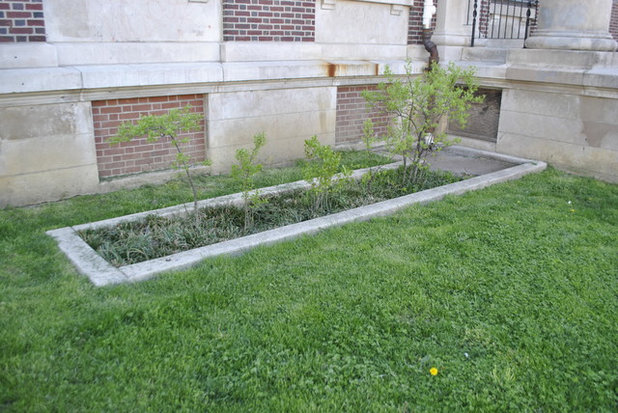
The stormwater planter in this photo is sunk into the ground, and the water from the roof downspout spreads over a sloped concrete area. The concrete pad allows for water to spread and then drain into the planter as a dispersed sheet instead of as a gushing point of water. The planters work best when water can flow into them, settle and percolate through the planter. The planters are constructed so that water can pool on the surface during heavy storms and slowly infiltrate through the layers.
Photo by Louis Cook for the Philadelphia Water Department
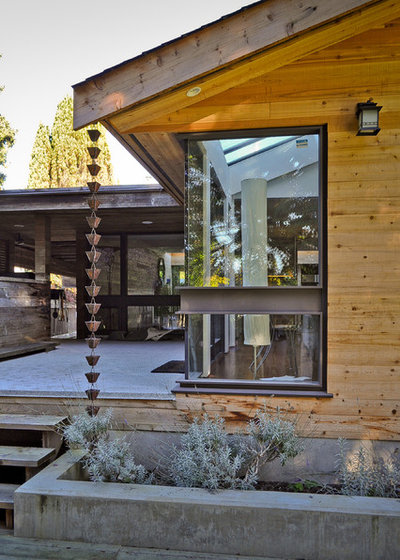
Synthesis Design Inc.
How to place and size a stormwater planter. The best locations for stormwater planters are where they can intercept runoff directly from a roof, driveway or other nonpermeable surface. In cities, stormwater planters are used adjacent to sidewalks and roads to capture and cleanse the water moving across a nonpermeable surface, called sheet flow.
The simplest way to size a stormwater planter is to measure the surface area from which the water will be collected. Here is a calculation to help you determine the right size planter for your roof, assuming water collection is from one roof downspout:
- Surface area of roof draining to a single downspout x 4 percent = square foot of planter for that downspout
If the roof area draining to a single downspout is 500 square feet, the footprint of the stormwater planter should be 20 square feet (0.04 x 500). That means you can design a planter that measures 5 feet by 4 feet or 2 feet by 10 feet or some other dimension that adds up to at least a 20-square-foot area.
These planters are very effective stormwater management tools in a confined space, because they take up so little square footage compared to how much runoff they can handle.
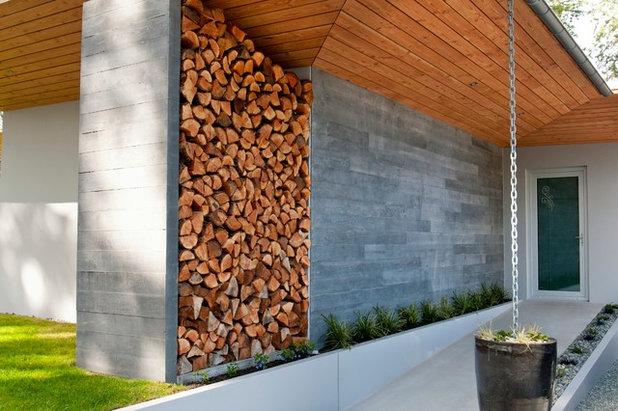
NZ Builders Ltd
How to move water from the roof into the stormwater planter. Moving water from the roof gutter into a stormwater planter can be done with a rain chain, as pictured here, or with a downspout. The advantage of moving water with a rain chain is that it helps disperse the water as it meets the planter surface. Whatever method you use, remember to provide a surface for water dispersal at the point where water exits the rain chain or downspout. A concrete pad — also called a splash block — or a collection of stones will disperse the water as it flows into the planter.
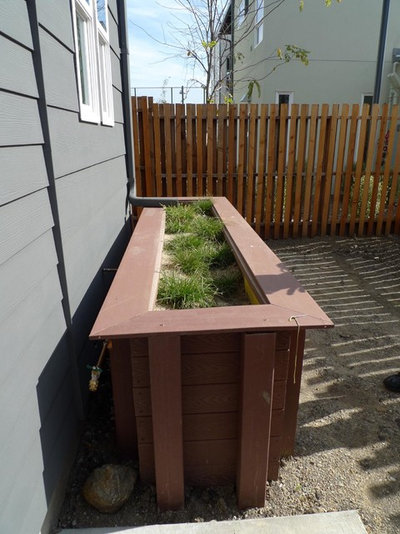
A stormwater planter, like any method for managing rainwater, needs an overflow mechanism. When the planter becomes full, make certain that the overflow water is always directed away from structures or sent directly into a subdrainage system. Overflow mechanisms for stormwater planters are similar to those used for rain barrels.
Photo by Mark HoganMore:How to Manage Stormwater in Your Landscape
How to Harvest Rainwater for Your Garden





